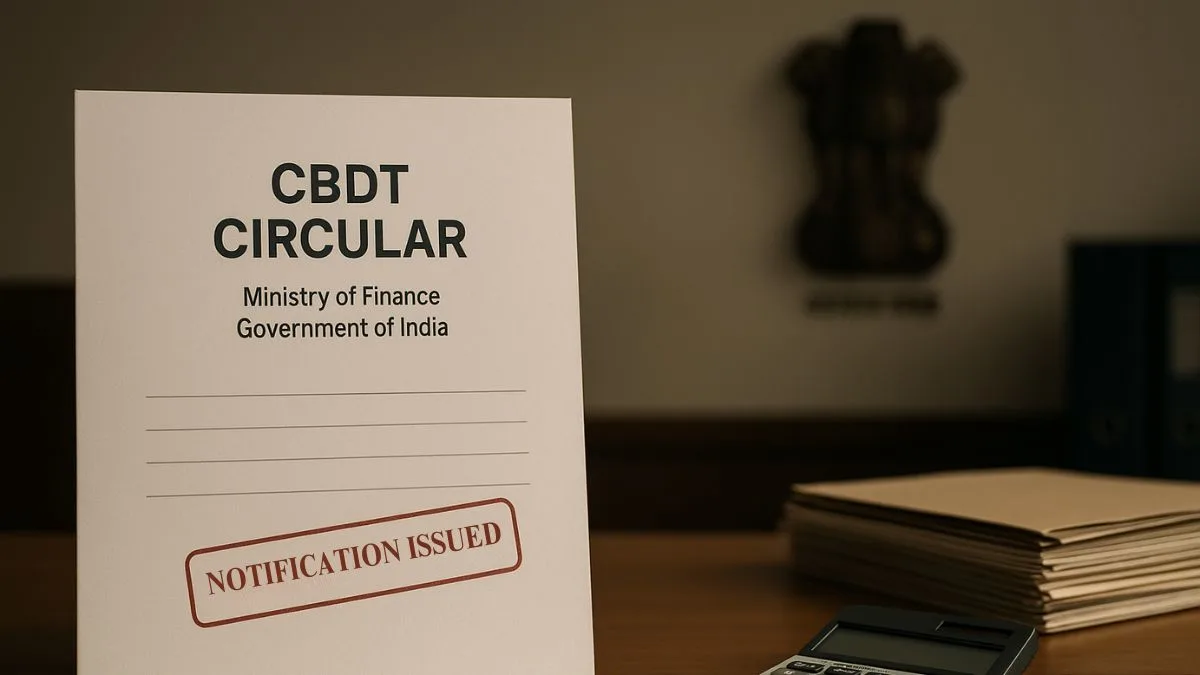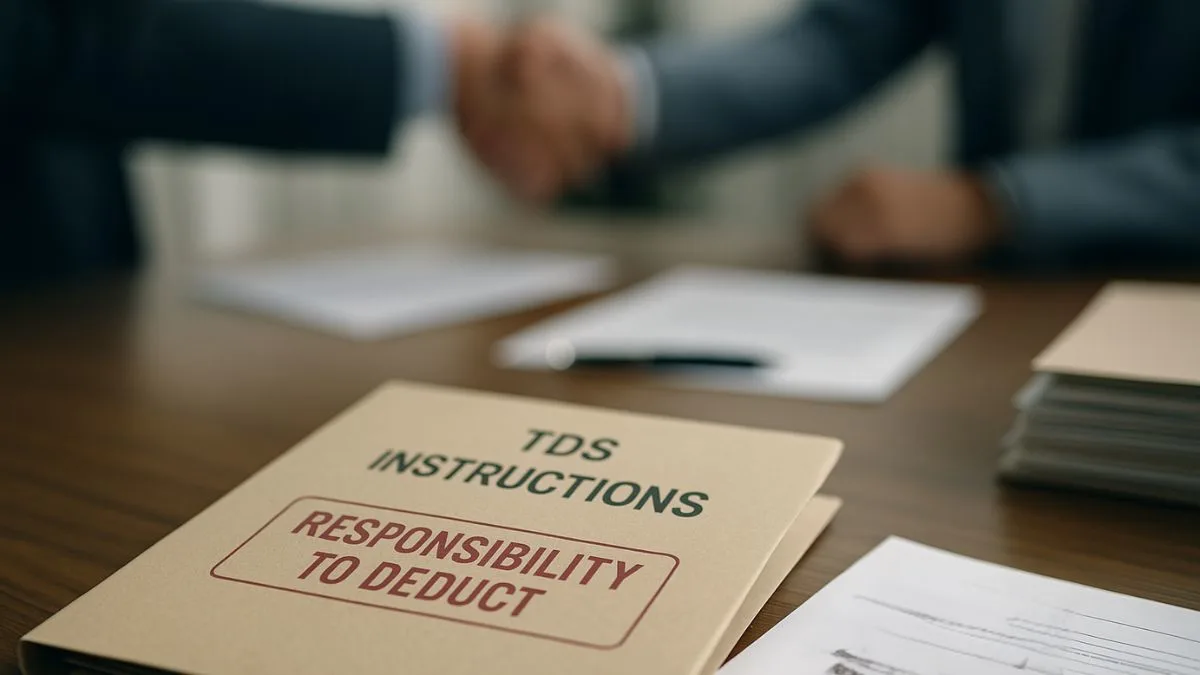
The direct tax system in India is governed by the Income Tax Act, 1961. But while the Act is setting the law, it’s the rules that set that law in motion. These rules dictate the process for administering taxes — which forms must be used, how returns are filed, and how tax authorities operate.
Individual officers don’t have the power to write such rules — rather, that authority comes from a particular section of law, Section 295 of the Income Tax Act, which gives that ability to the Central Government.
This section gives the government flexibility to make rules applicable to the whole or any part of India, ensuring uniformity across the country.
A Look at Section 295 of the Income Tax Act
Section 295 of the Income Tax Act, 1961 is an enabling provision for delegation of power to make rules by the Government to carry out the purposes & objectives of the Act. In simple terms, Parliament passes the Income Tax Act, and from time to time, the Central Board of Direct Taxes (CBDT) — an arm of the Finance Ministry — issues detailed rules that give practical effect to various provisions of the Act.
These are called the Income Tax Rules, and they explain how the law operates in reality. This section allows the tax system to evolve as needs, technologies, and economic conditions change, without requiring a full parliamentary amendment each time.
Text of Section 295
According to Section 295(1) of the Income Tax Act,
“The Board may make rules for the whole or any part of India for carrying out the purposes of this Act.”
This implies that the CBDT (under control of the Central Government) has the power to make rules which are:
- Applicable all over India, or
- Restricted to a state, union territory, or class of persons for administrative purposes."
This flexibility allows the system to respond to complex & dynamic tax environments.
Also Read: Validity of Returns, Assessments, and Proceedings
Key Objective of Section 295
The main objective behind Section 295 of the IT Act is to transfer the power of making rules from the Parliament to the tax administration for ease of implementation. The Act establishes core terms such as income, deductions, and penalties, while Section 295 provides a mechanism to define specific procedures, making the law both practical & enforceable.
It provides a framework for:
- Forms & filing requirements
- Procedures for block assessments
- Conditions for exemptions or approvals"
- Timelines for compliance
- Technical modernization through digital innovations like e-filing
Power to Make Rules
Section 295 confers the power to make rules across almost all areas of income-tax law.
The CBDT makes amendments to the Income Tax Rules through notifications published in the Official Gazette. These regulations are binding on taxpayers, assessing authorities, & even appellate forums.
Examples of Rules under Section 295
- Rule 12 – Relates to ITR forms & mode of filing
- Rule 37BB – Defines reporting requirements for foreign remittances
- Rule 114B to 114D – Deals with PAN provisions & data sharing
This power helps maintain consistency in the rapidly changing policy and technological environment.
Block Assessment in Search Cases
One of the key applications of Section 295 is in search & seizure inquiries. The section authorizes the CBDT to frame rules for block assessment procedures in such cases — covering not only the person searched but also associated persons.
These rules are expected to be transparent, non-adversarial, and designed to provide clarity in determining taxable income during high-stakes search & seizure situations.
Scope – Entire or Any Part of India
A unique feature of Section 295 is that it empowers the Government to make rules applicable to the whole or any part of India.
This enables the government to:
- Address local administrative barriers
- Test new digital initiatives before national rollout
For instance:
- Relief may be offered only to taxpayers in disaster-affected states.
- E-assessments may first be piloted in specific cities.
This flexibility helps keep the tax system dynamic & realistic.
Also Read: Cash Limit for Loans, Deposits & Specified Sums
Procedure for Making Rules under Section 295
The process for creating rules under this section is transparent and consultative:
- Suggestion – Example: Rule 11U may be proposed by the CBDT for administrative or legal needs.
- Authorization – The draft is vetted by the Ministry of Finance.
- Issue – After approval, the final rule is published & becomes law.""
- Parliamentary Oversight – The rule is laid before both Houses of Parliament for review or disapproval.
This ensures democratic supervision while maintaining administrative flexibility.
Distinction Between the Act and Rules
|
Aspect |
Income Tax Rules (under Section 295) |
|
|
Objective |
The lay & the applyance of the lay |
Operational application of law |
|
Authority |
Enacted by Parliament |
Framed by CBDT under Government oversight |
|
Scope |
Substantive |
Procedural |
|
Flexibility |
Needs parliamentary amendment |
Updated by Government notification |
|
Example |
Section 139 – Return of Income |
Rule 12 – ITR forms & filing methods |
This separation ensures that the law remains stable, while its implementation can evolve quickly.
Importance of Section 295
Section 295 is indispensable to the functioning of the Income Tax Act.
The Act sets broad principles, while rules define the specifics — such as how forms are filed, assessments issued, penalties imposed, & appeals handled.
For example:
- The Act says “file an income tax return,” but the rules specify the forms, formats, and timelines.
- The Act provides for “search assessments,” while the rules define procedures for block assessments.
Together, they ensure transparency, certainty, & consistency.
Also Read: Higher TDS for Non-Filers
Recent Examples of Rulemaking
Recent updates under Section 295 include:
- New ITR forms for individuals and firms
- E-assessment & faceless appeal frameworks
- TDS rules for virtual digital assets
- Angel tax valuation guidelines for start-ups
All these are issued “with the previous approval of the Central Government under Section 295” of the Income Tax Act, 1961.
Judicial Validation
Indian courts have upheld Section 295 as constitutional, confirming that Parliament’s delegation of rule-making power to the executive is valid, provided the parent Act offers sufficient guidance.
Thus, Section 295 stands as a constitutionally viable and administratively efficient governance tool.
Impact on Taxpayers
Section 295 affects almost every taxpayer — directly or indirectly. Every time you file an ITR, deduct TDS, declare foreign income, or respond to a notice, you are operating under rules framed using the power of Section 295."
It ensures consistency, fairness, & uniform process application across the nation.
Illustrative Rules Enacted Under Section 295
- Income-tax (29th Amendment) Rules, 2021 – Credit of TDS to correct person
- Rule 44DA – Income from royalty or technical fees
- Rule 114DA – Financial transaction statements under FATCA
All of these derive their authority from Section 295.
Key Takeaways
- Section 295 empowers the Central Government to make rules for the whole or any part of India.
- It ensures effective implementation of the Income Tax Act.
- Rules may govern block assessments, TDS, returns, & more.
- CBDT notifies and updates these rules regularly.
- It keeps tax laws aligned with technological and economic developments.
Also Read: Interest on Delay in Advance Tax Payments
Conclusion
One of the key administrative pillars of India’s tax framework, Section 295 of the Income Tax Act, 1961, empowers the government to make rules and keep the tax system adaptive and efficient. From return filing to e-assessment and TDS compliance, every operational detail stems from this section.
It is, quite literally, the unseen engine that keeps India’s tax machinery running smoothly. If you’re struggling to stay updated with compliance requirements or recent rule changes under the Income Tax Act, you’re not alone.
👉 Our experts at CallMyCA.com help individuals and businesses stay fully compliant — from filing returns to responding to notices — all aligned with the latest rules framed under Section 295.
Let’s make your tax compliance journey easy, efficient, and stress-free!










